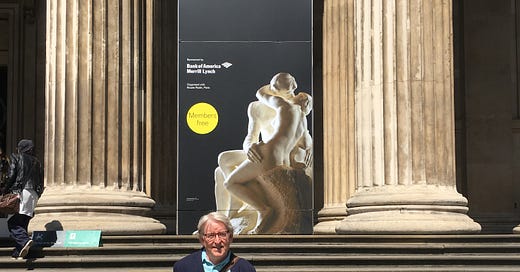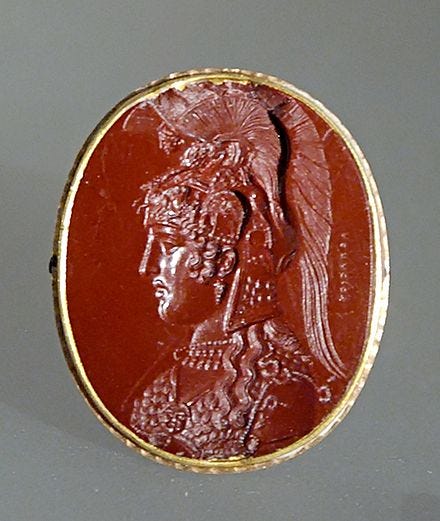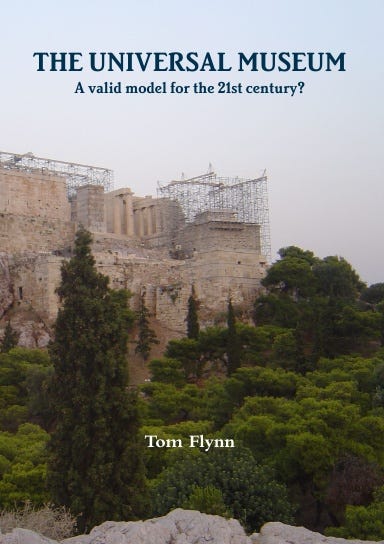Behind the Scenes at the Museum
The British Museum is in a mess. How long has this been the case?
I love the British Museum. I also hate it. Let me explain.
Let’s do the love bit first. Several times a week for three or four years back in the early ‘90s, while researching my doctoral thesis, I walked past the desk in the British Library at which Karl Marx used to sit (and occasionally snooze, according to legend).
In those days the British Library Reading Room was based in the British Museum. (What a logistical operation it must have been to move that extraordinary archive to its new premises in Kings Cross St Pancras in 1997; sadly, much of the romance went with it.)
One of the objects I was most transfixed by at that time was a red jasper intaglio of the Roman Imperial period bearing an image of the head of Athena Parthenos — the colossal chryselephantine cult statue by Phidias that once occupied the cella of the Parthenon in Athens (below).
This exquisitely carved gem is attributed to the Roman artist Aspasios. It’s one of only a handful of surviving early representations of the gold and ivory Athena that was the inspiration for my (unpublished) doctoral thesis on chryselephantine sculpture. I never got to see that tiny, beautiful object in the flesh as my limited student travel budget at the time didn’t extend to a trip to the Museum of the Terme in Rome, where the gem still resides. (The internet had not yet arrived at that point, so I was relying on images in books and catalogues.)
Had it been in the British Museum rather than in the relative safety of the Terme collection, Aspasios’s jasper intaglio would likely have nestled among the hundreds of other diminutive antique gems that are now at the centre of a tawdry controversy involving the wholesale theft by Peter Higgs, the BM’s former curator of its Greek and Roman collections.
And this is where we get to the rhetorical “hate” bit, although that is far too strong a term.
The gem-theft scandal has now been featured in a BBC documentary presented by its culture editor Katie Razzall. The programme concludes with a smarmy, triumphal statement by the chair of the Museum’s trustees, George Osborne (the Ictinus of austerity), to the effect that: “We’ve got our man,” referring to the disgraced former curator Higgs, now allegedly under police investigation.
It would seem, according to various accounts, that Higgs’s thievery had likely been going on for twenty years or more. This would extend it back into the administration of the much-lauded former director Neil McGregor who, when not collaborating with the BBC on his History of the World in 100 Objects radio series, seemed to spend much of his time desperately fending off the increasingly clamorous calls for the reunification of the Parthenon Marbles and the repatriation of the Benin brasses.
He can be seen breathlessly struggling to defend the Museum’s retention of the Benin collection on a 2015 BBC Two Newsnight edition to which I briefly contributed. (At one point he seems to say, “No, I’m sorry, I’m not prepared to be criticised…” before changing tack.)
At the time, I was one of a vanishingly small minority to criticise his ‘100-Objects’ project, calling it on my Artknows blog — in retrospect, perhaps a little too bluntly — ‘A History of the World in 100 Looted Objects’ (nothing if not critical).
The BBC, desperate to seek an argumentative voice on a Radio Four ‘History Today’ programme about the series, chose (without asking me) to voice pieces of my blog using an anonymous, Northern accented voice-over (presumably better to conjure an alternative to a Southern ‘educated’ hinterland…who knows?)
In the twenty years since those broadcasts, much has changed. The calls for the repatriation of cultural objects from the world’s so-called “universal museums” grows ever louder as the global south seeks redress for the historical wrongs of the colonial era.
The British Museum, still cleaving to its self-appointed role as the most resistant bulwark against this tide of appeals, is now mired in a fresh controversy, thanks to the recent insider thefts.
Happily, most if not all of the stolen gems have reportedly been recovered and returned to the museum where a new regime of cataloguing is underway. (Is this theft case an outlier, or the tip of the proverbial iceberg? We may never know.)
What this controversy has revealed is something many of us who treasure our museums have known for decades, and which is far more worrying — namely that vast swathes of the BM’s collections have never been catalogued (or even exhibited). That is surely a thief’s charter.
As a journalist back in the ‘90s, I wrote regularly for the Museums Journal and Museum Practice magazine and care deeply about the sector. I want the British Museum to endure. I love the place and so do my two sons. It is a core part of my intellectual habitus.
However, despite its many positives, the BM remains as much an exemplar of what is wrong with our largely uncatalogued, largely unprovenanced, and increasingly unsustainable encyclopaedic museums.
Ironically, the Higgs fiasco has thrown the issues around the British Museum into the sharp relief of an intaglio gem.
Love these institutions or hate them, something has to change.







As ever on point Tom! Thank you for your words of wisdom.
The BM has a future and one that includes 'letting go' of some of its treasures, and in return, see others arrive - ones that can travel and be enjoyed by 6 million visitors from all over the world. Ones that arrive with the permission of the country of origin and will be viewed as 'sharing cultural heritage' in the 21st century.
Excellent 👏🏼